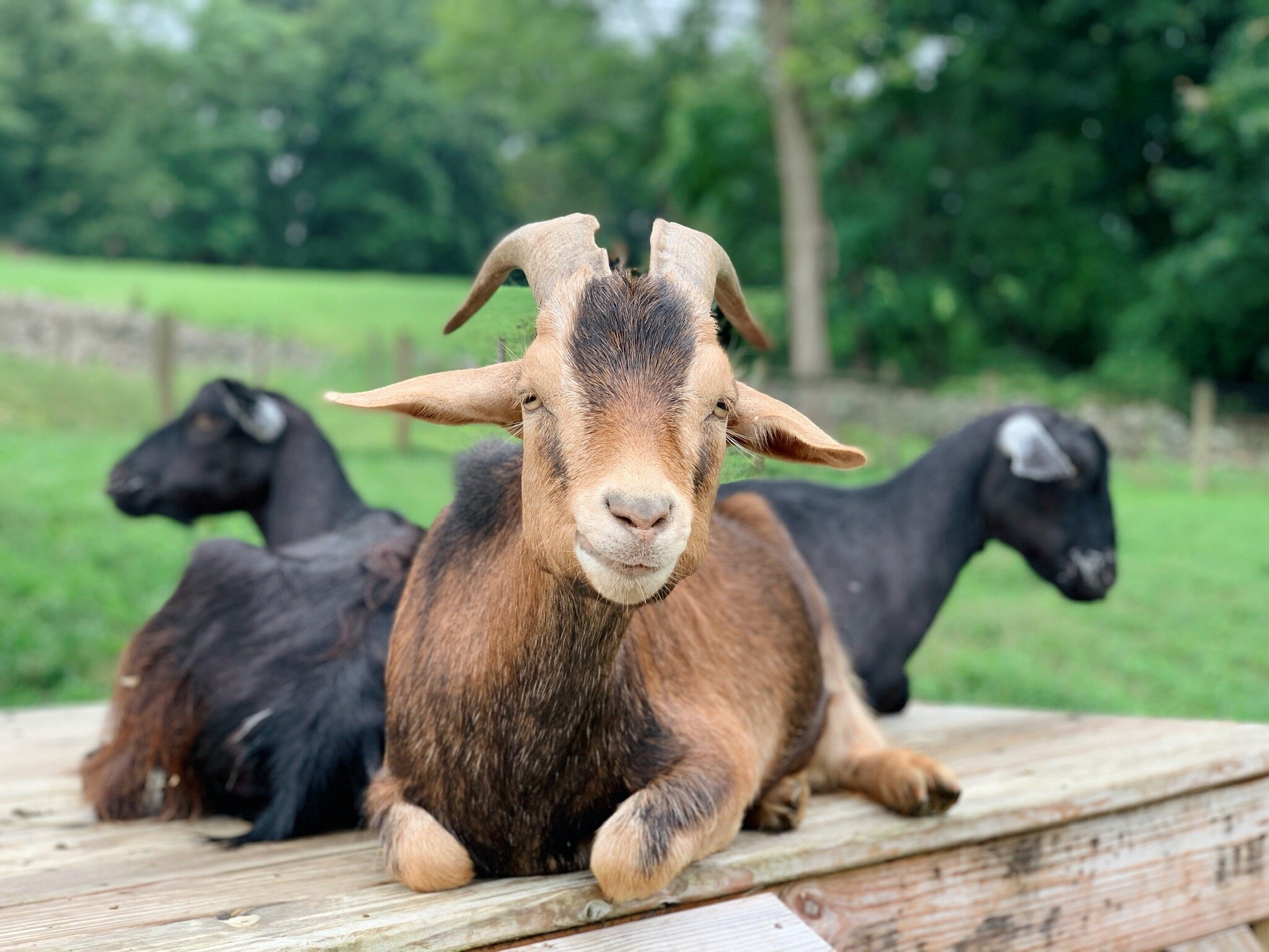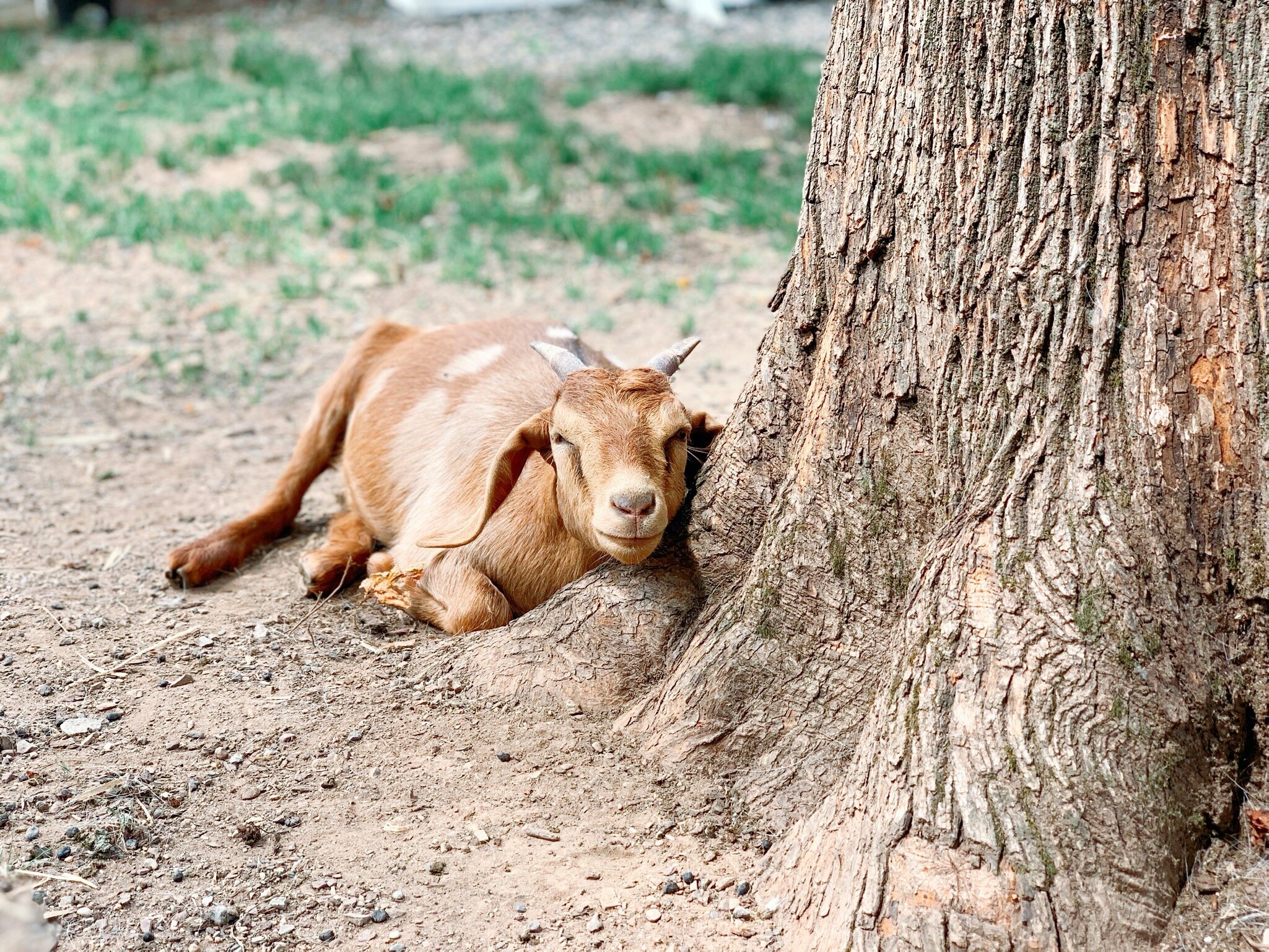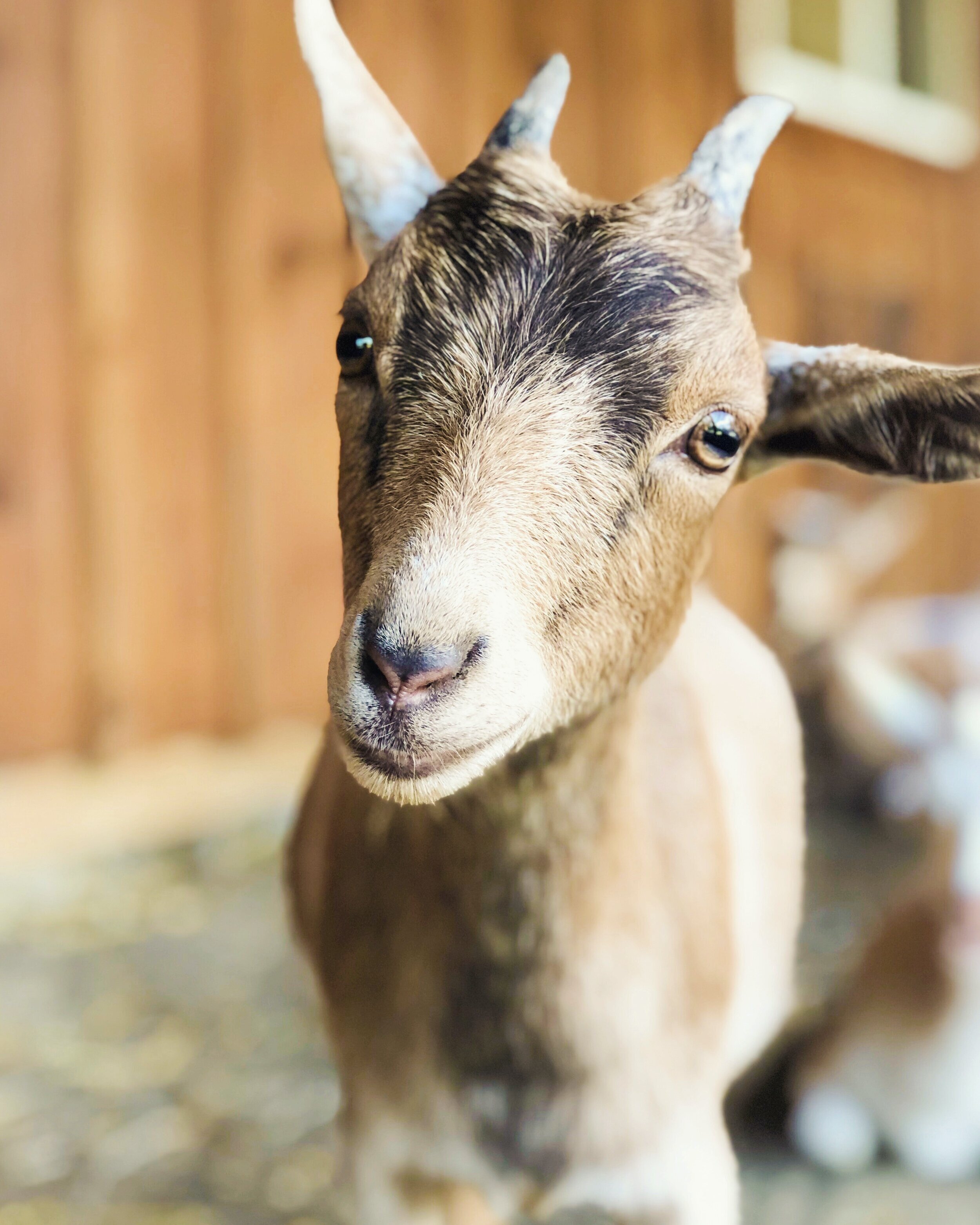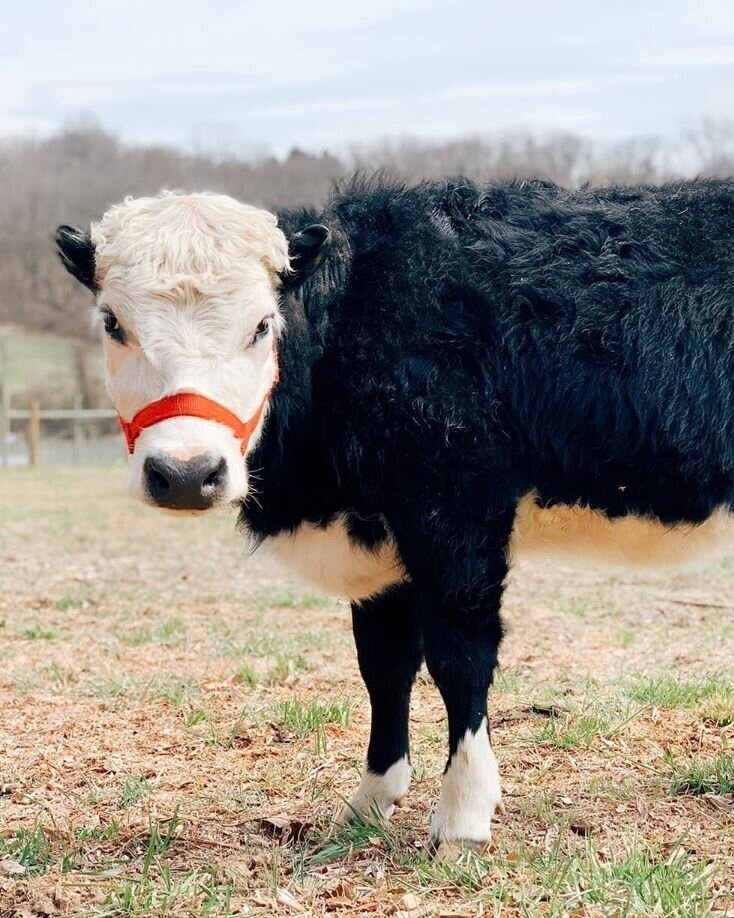
Create a kinder world.
Go vegan.
For the animals.
More than 200 million land animals are killed for food around the world every day. That’s 72 billion land animals per year. Stop funding the industries that profit from their deaths, and go vegan! All animals deserve to live free of harm and oppression.
For the environment.
Animal agriculture produces more greenhouse gases than all transportation combined! It is also the leading cause of rainforest destruction, species extinction, ocean dead zones, and fresh water consumption.
For your health.
Many recent studies indicate that plant-based eating is better for your heart, and significantly reduces the risk of cancer, type 2 diabetes, depression, and Alzheimer’s. Additionally, almost all modern pandemics can be linked to human consumption of animals.
What vegan means to us.
While the official definition of veganism is “a way of living that seeks to exclude, as far as possible and practicable, all forms of exploitation of and cruelty to animals for food, clothing, or any other purpose,” veganism at GOA means this and more.
We believe that veganism can be summed up in two words: compassion and kindness for all. Our mission to rehabilitate animals with special needs reflects the belief that humanity must protect those who are vulnerable, practice empathy to understand the hardships of others, and extend kindness to all — because that is truly the least we can do. All animals, whether or not they have disabilities, are vulnerable and deserve our protection because they are the most exploited beings on the planet.
At GOA, we value the gift of life and believe that everyone deserves a safe, long life. That’s why we are a vegan sanctuary. Veganism is an opportunity to align our actions with our belief that all animals deserve to live free of unnecessary cruelty, exploitation, and death. There is no “humane” way to kill an animal who does not want to die.
All animals deserve the kind of life that the residents of GOA have found. Please read through the following facts to learn about how the animal agriculture industry exploits animals to understand why and from what we have rescued many of the GOA residents — and why we continue to use our voices to fight for farmed animals.
What vegan means to them.
Goats
In the U.S., goats are raised for meat, milk, and for fibers used in textiles.
In the goat dairy industry, mothers and babies are traumatically separated after only a few hours or days, so that the mothers’ milk can be taken.
Female goats are protective, nurturing mothers, so the separation from their kids is emotionally traumatic for them. They will often cry out for hours or days frantically searching for their babies (this is true of the dairy cow industry as well).
Male baby goats in the dairy industry are considered a wasteful byproduct, so they are either killed immediately at birth and discarded or raised for meat.
The natural life expectancy of goats is 15-18 years, but when milk production drops, dairy goats are killed at only a few years of age.
Goats who are raised for meat undergo painful mutilations to their bodies, such as castration without anesthetic and disbudding of the horns.
Disbudding is the removal of the sensitive, nerve-filled horn buds that will grow into horns. This procedure is generally performed using a searing hot cylindrical iron, which burns and damages the horn buds.
Sheep and alpacas.
Whether sheep are farmed for wool, milk, or meat, they are all slaughtered when they are no longer useful.
Sheep are transported long distances to slaughter, which causes them much stress and injury. They frequently suffer from heat stroke and dehydration as a result of overcrowding, lack of ventilation, and no access to water.
Naturally, ewes would give birth to a single lamb. However, because of human manipulation, many sheep are now selectively bred to produce two or even three lambs. Ewes can only nurse two lambs at a time, so a third lamb will either be given to a different ewe, bottle fed, or force fed through a tube into their stomachs.
When ewes breed naturally, they give birth in spring. When artificially bred, many ewes are forced to give birth in the dead of winter. Millions of lambs die each year at birth or soon after due to exposure, disease, or malnutrition.
Alpacas are raised mainly for their soft wool.
Alpacas are also raised for their meat, which is more popular in Japan, China, and Asia, but is gaining traction in the U.S.
Pigs.
On any given day in the U.S., there are more than 75 million pigs on factory farms, and 121 million are killed for food each year.
On most industrial farms, female breeding pigs spend their adult lives in “gestation crates” which are barely bigger than the sow’s body. These cages make it impossible for the mother to turn around or even lie down comfortably. They are repeatedly impregnated until they are slaughtered.
At only a few weeks old, piglets are taken away from their mothers and undergo a series of mutilations, including castration, tail docking, and teeth clipping — without any pain relief. These procedures fall under the label of “humane” practice.
A typical slaughterhouse kills about 1,000 hogs per hour.
Because of improper stunning, many hogs are alive when they reach the scalding-hot water baths, which are intended to soften their skin and remove their hair.
Pigs naturally live 15 to 20 years, but in the animal agriculture industry, pigs are slaughtered as babies around six months old.
Horses.
Healthy, young horses are routinely slaughtered because of the U.S. beef industry, as well as horse racing industry.
The U.S. Department of the Interior's Bureau of Land Management regularly rounds up wild horses and removes them from public lands in order to make room for beef cattle to graze. These horses are available for adoption, but are rarely adopted due to being unhandled. Most of these horses are eventually sold to kill buyers and shipped to slaughter.
While it is illegal to slaughter horses in the U.S., horses are transported daily to Canada or Mexico for slaughter.
More than 100,000 retired racehorses per year go to kill buyers.
The horses are transported on trailers meant for cattle for more than 24 hours without food or water; they do not even have enough room to stand up properly.
In the racing industry, 750 horses die on the track each year, an average of two fatal injuries per day. This is because horses are made to start racing before their bones are fully formed.
Cows.
In the United States alone, over 29 million cows suffer and die each year in the meat and dairy industries.
On many farms, cows are branded, dehorned, and castrated when they are young; each of these are extremely painful processes performed without painkillers.
When they are large enough, cows raised for beef are transported to enormous, dirty feedlots, where they live without shelter from the cold or heat while they are fattened for slaughter.
On dairy farms, cows are artificially impregnated year after year. Each time they give birth, they are separated from their calves within hours or days. Cows form strong bonds with their calves, and can often be heard crying out for their calves after they have been separated. When they stop producing enough milk (around 6 years old, typically), they are sent to slaughter.
On their way to slaughter, cows are transported up to hundreds of miles in all types of weather, usually without food or water. Cows who survive transport are shot in the head with a bolt gun and hung up by one leg before having their throats cut, then being skinned and gutted.
Turkeys.
In 1970, the average turkey raised for meat weighed 17 pounds. Today, turkeys average 28 pounds.
Turkeys have become so unnaturally disproportionate that they can no longer mate with one another.
Turkeys have the innate urge to perch and fly, but the selectively bred turkeys on factory farms are too large to do so.
Because of this artificial manipulation, turkeys’ legs often break beneath them.
In factory farms, to keep turkeys from killing each other, parts of their toes and beaks are cut off without painkillers.
At 5 to 6 months old, turkeys are sent to the slaughterhouse. In the wild, they can live to be 10 years old.
Ducks and Geese.
Ducks and geese are routinely and brutally abused by the meat, foie gras, and down industries.
Birds raised for meat spend their whole lives packed into filthy sheds, where they often become sick or injured. When the time comes to be slaughtered, it is not uncommon for birds to survive the electric stunning process meant to render them unconscious, meaning they feel the pain of having their throats cut and being submerged in the scalding-hot water of the defeathering tanks.
Birds raised for foie gras have pipes or tubes shoved down their throats three times a day. Four pounds of grain is then pumped into their stomachs in order to produce the diseased “fatty liver” that is used in foie gras. When the birds are finally sent to slaughter, their diseased livers are up to 10 times their normal size.
Down, the soft layer of feathers closest to birds’ skin, is sometimes plucked from ducks and geese while they are still alive, causing them significant pain and distress. Their feathers are ripped right out of their skin. This is done as early as 10 weeks old, and is repeated every six weeks until the birds are slaughtered for meat.
Chickens.
Chickens raised for their flesh, called “broilers,” spend their entire lives in filthy sheds with tens of thousands of other birds, where intense crowding and confinement lead to outbreaks of disease.
They’re bred and drugged to grow so large so quickly that their legs and organs can’t keep up, making heart attacks, organ failure, and crippling leg deformities common.
Birds exploited for their eggs are crammed together inside wire cages where they don’t even have enough room to spread their wings.
The birds have part of their sensitive beaks cut off so that they won’t peck each other out of frustration created by the unnatural confinement.
At the slaughterhouse, their legs are forced into shackles, their throats are cut, and they’re immersed in scalding-hot water to remove their feathers.
Because they have no federal legal protection (birds are exempt from the Humane Slaughter Act), almost all chickens are still conscious when their throats are cut, and many are literally scalded to death in the feather-removal tanks after missing the throat cutter.
Because the male chicks of egg-laying breeder hens are unable to lay eggs and are not bred to produce excessive flesh for the meat industry, they are killed as soon as they hatch.
Every year, 200 million of these young male birds are ground up alive or tossed into bags to suffocate.
Choose compassion.
Why wait until tomorrow to end animal suffering today?

Our favorite vegan recipes.
Follow our Instagram account @goavegan to see simple and EASY vegan recipes, tested and approved by the Goat Squad!












